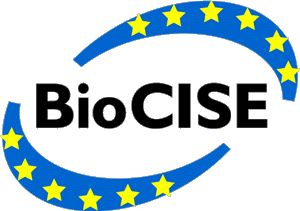 |
Resource Identification for a Biological Collection Information Service in Europe |
 |
Resource Identification for a Biological Collection Information Service in Europe |
[Home | Publications and References | The Survey | Collection catalogue | Software | Standards and Models]
The Royal Botanic Garden Edinburgh is a scientific institution dedicated to the pursuit of research of the highest quality on the systematics and biology of organisms. This research, which underpins other organism science and conservation, is made possible by the Garden's internationally important collections of living and preserved organisms.
The Herbarium of the Royal Botanic Garden Edinburgh houses a collection of preserved organism material that lies at the core of the Garden's scientific research into the classification and evolution of organisms and fungi. Complementing the living collections and supported by the Library, the Herbarium collection comprises some 2 million specimens covering the whole of the organism kingdom, from microscopic diatoms to samples of the world's largest trees. The core collections are those of the Botanical Society of Edinburgh, the University of Edinburgh, and the University of Glasgow (on permanent loan), but the collections are continuously being enriched through collecting expeditions, gifts and exchanges.
Organisms from the Sino-Himalayan region, India, tropical south-east Asia, Brazil, southwest Asia (especially Turkey and Arabia) and Scotland are particularly well represented. Research programmes have been designed to exploit these regional strengths and have in turn enriched the collections in certain taxonomic groups, for example in the higher organisms with conifers and rhododendrons and in the lower organisms with fungi, mosses, liverworts, lichens and algae.
Major studies were also made of a number of angiosperm families, including the Ericaceae (especially Rhododendron), Gesneriaceae and Umbelliferae. The internationally acclaimed Flora of Turkey project was carried out at RBGE under the direction of Professor P. H. Davis of the University of Edinburgh. The Royal Botanic Garden Edinburgh also developed strong research programmes on conifers and cryptogams, including ferns, bryophytes and fungi.
The breadth of botanical expertise presently within RBGE is one of the Garden's principal and distinctive strengths. Present research focuses both on particular organism groups, for example rhododendrons, umbels, the rose family conifers, and cryptogams such as ferns, fungi, lichens and algae (monographic studies) and on the organism life of particular areas, for example SE Asia, Brazil, Bhutan, Arabia, China and Scotland (floristic studies).
The RBG has set up its own molecular labs for DNA sequencing, restriction site and isoenzyme analysis. It takes part in a current EU biotech project testing molecular tools (RAPIDs) using wild Rhododendron organisms and garden material of wild origin. The Royal Botanic Garden Edinburgh is committed to pursuing high quality research in these and other fields, taking scientific research at the Garden into the 21st century.
The department of Taxonomic Computing at the RBG Edinburgh will contribute its the long-standing international contacts with organism databases, the experience of its staff members in area of taxonomic computing and databasing. The RGB Edinburgh houses several important databases, among these the Flora Europea database. A world master species database of Umbelliferae and of the Rosacea are under development. The botanical garden's accession system is fully computerised using BG-Base, a computer programme in use by more than 60 botanical gardens world-wide. BG-Base has been developed by K. Walter, who since last year also works at the RGB.
© BioCISE Secretariat. Email: biocise@, FAX: +49 (30) 841729-55
Address: Botanischer Garten und Botanisches Museum Berlin-Dahlem (BGBM), Freie
Universität Berlin, Königin-Luise-Str. 6-8, D-14195 Berlin, Germany